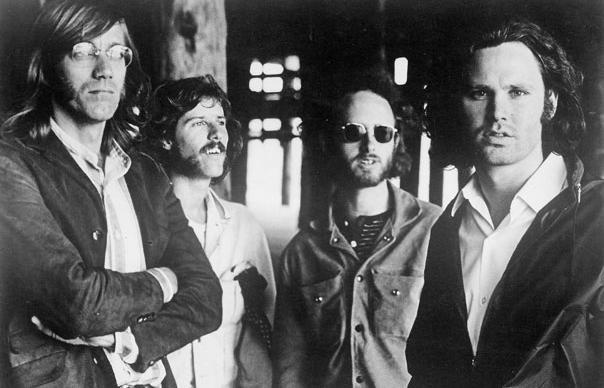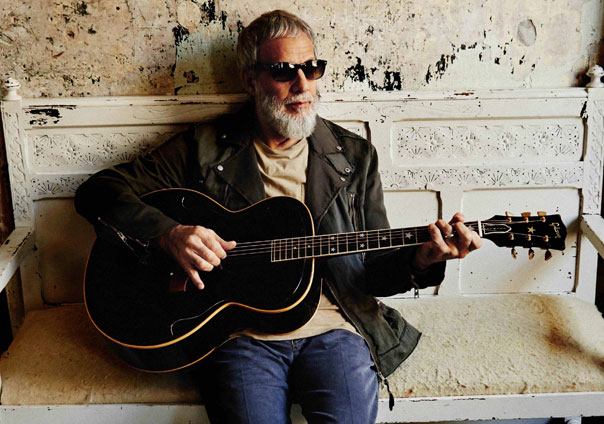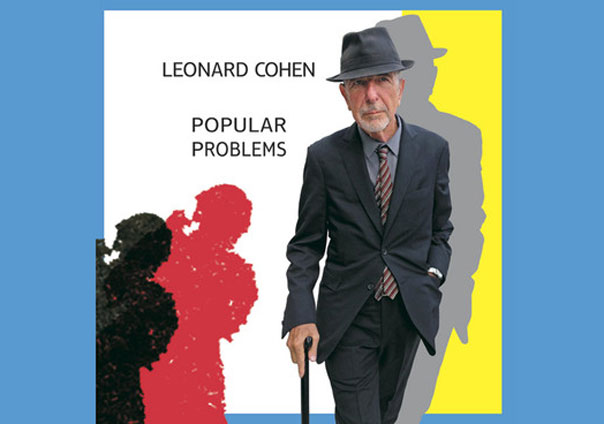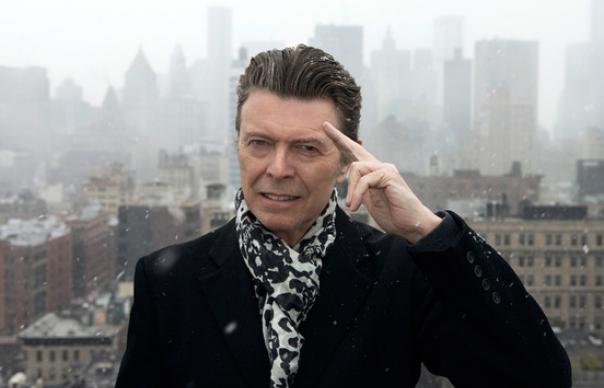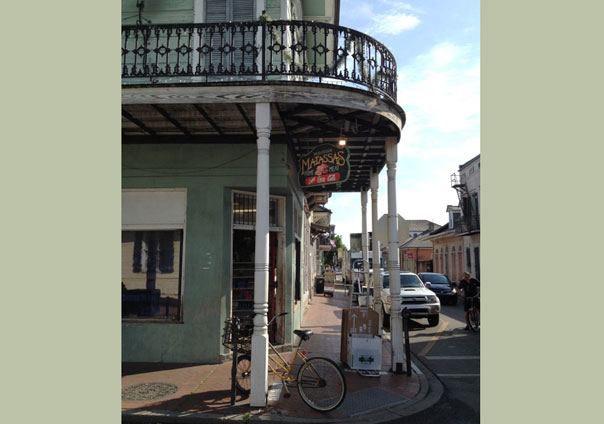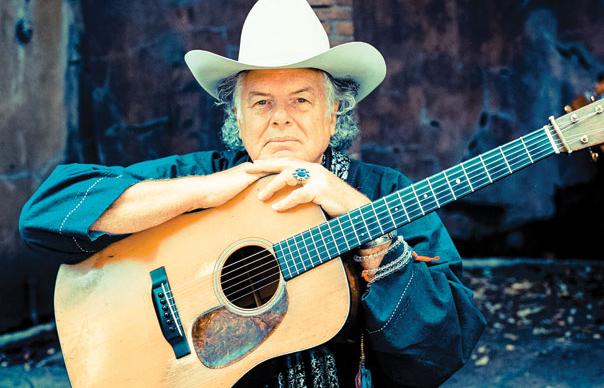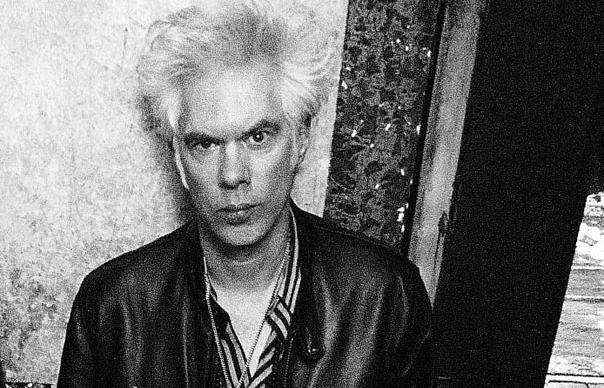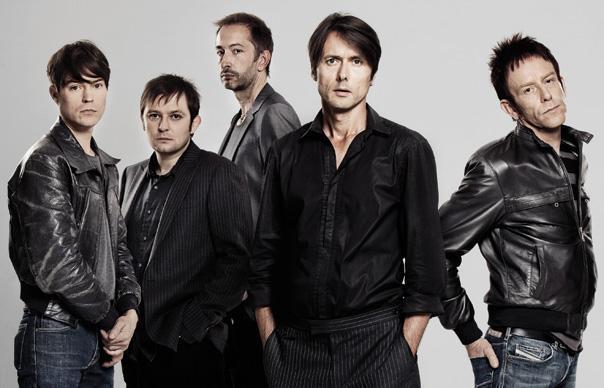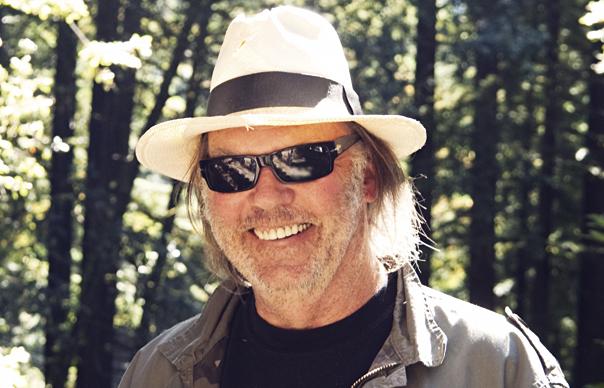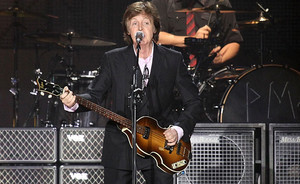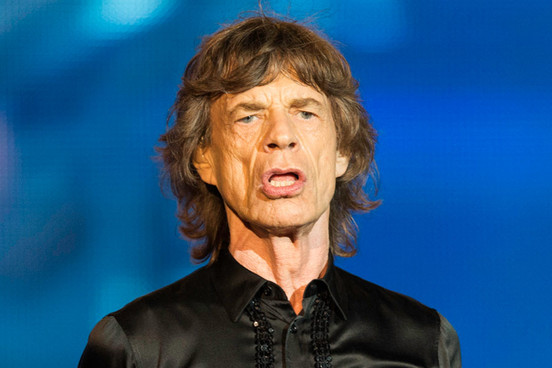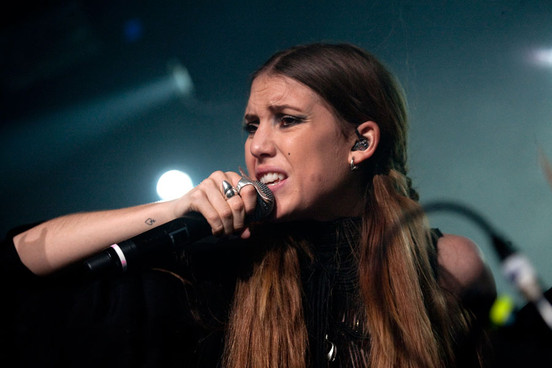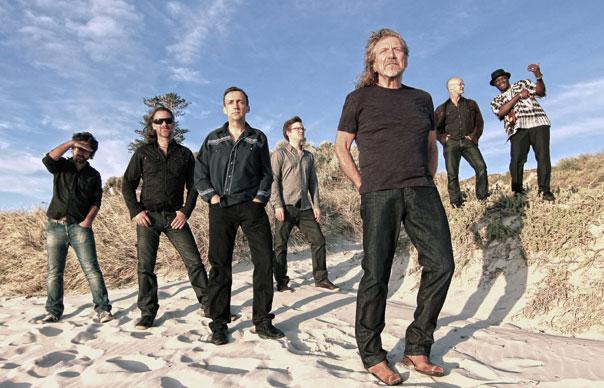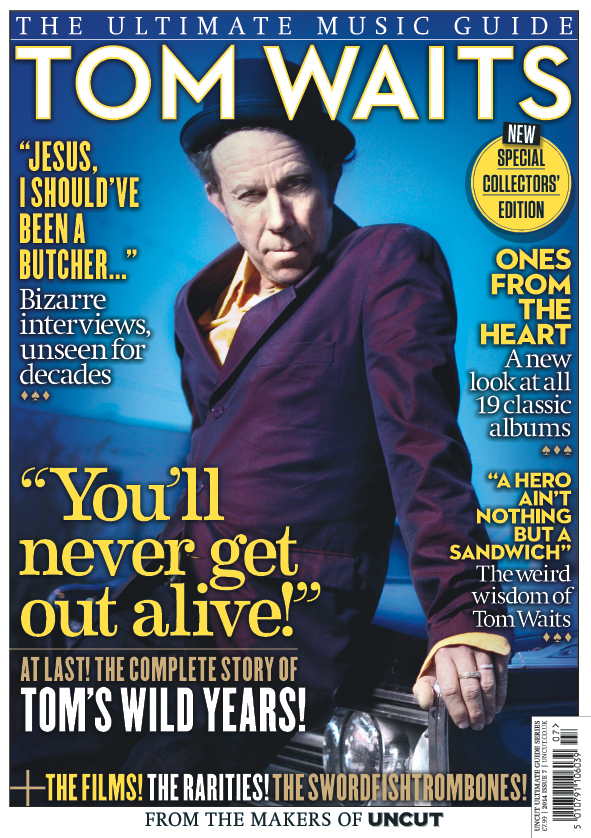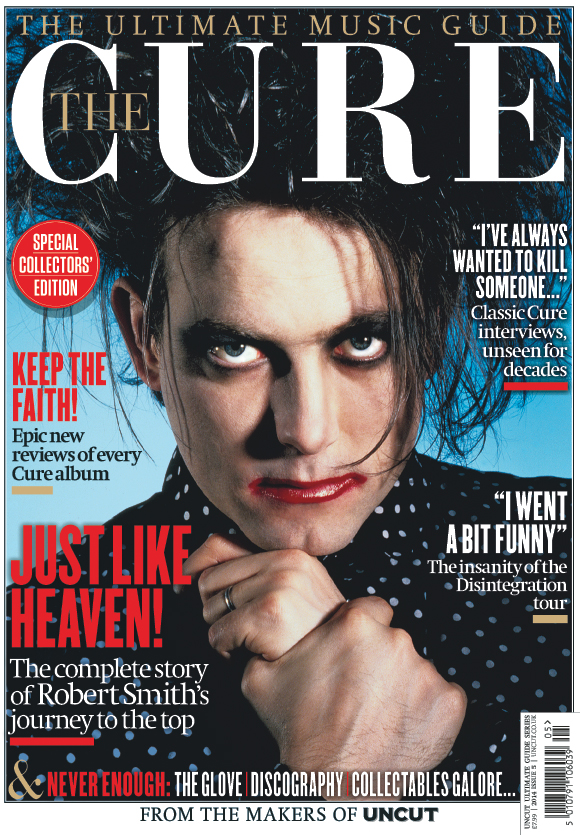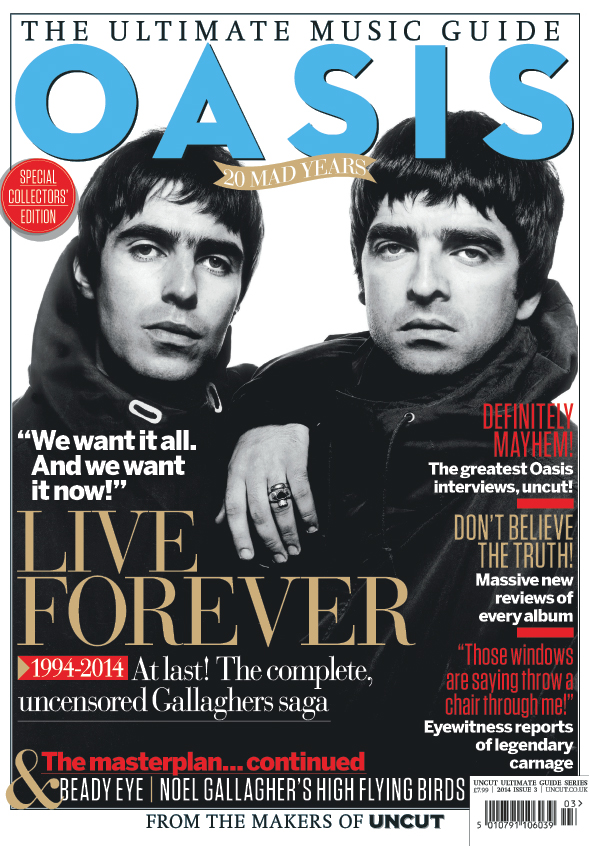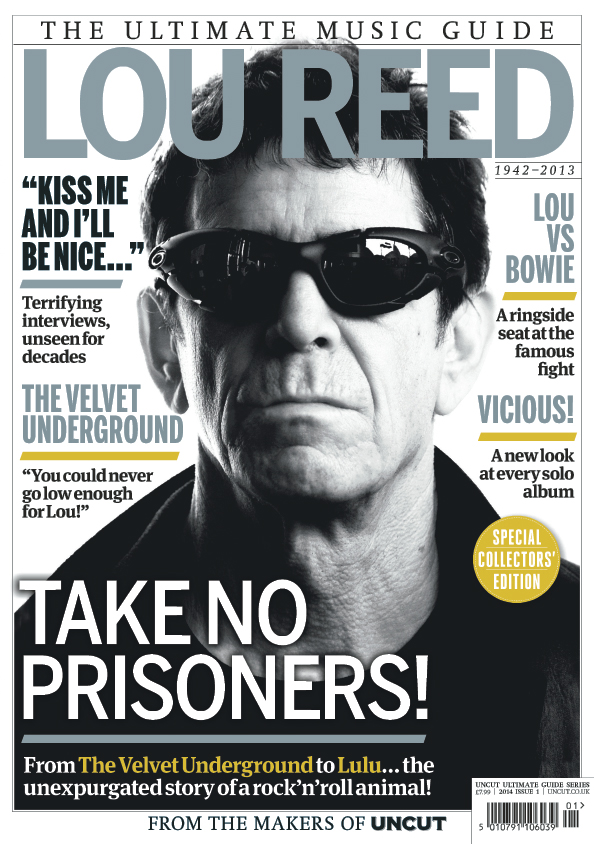U2’s shock-released new album, Songs Of Innocence, is largely themed around the band’s childhoods and adolescence in Dublin, according to Bono. Well, here’s what came next… This is the full story, as told by those who were there, of U2’s rise from indie hopefuls to becoming the Biggest Rock Band On The Planet. Written by Stephen Dalton, and originally published in Uncut’s December 1999 issue (Take 31).
______________
It’s December, 1979, the last drizzly month of the ’70s, and an obscure post-punk quartet from Ireland have just played their first British shows to half a dozen, largely indifferent club crowds across London. They’re called U2, although they’re billed as “V2” at the Hope & Anchor in Islington, where they’ve managed to attract an impressive audience total of nine people. Mostly lumbered with demeaning support slots to such rock legends as The Dolly Mixtures and Secret Affair, these raw Dublin teenagers have been seen by few and enjoyed by even fewer.
Intended as U2’s Last Big Push for a UK record contract, this December mini-tour has been cursed from the outset. A publishing deal struck by their manager, Paul McGuinness, to subsidise the trip has fallen through at the last minute and the band have been forced to tap family and friends for funds.
Meanwhile, guitarist Dave “Edge” Evans has been hurt in a minor car crash on the eve of the London dates, leaving him with a bandaged hand. In pain when he plays, Evans snaps a string at the Hope And Anchor show and storms offstage, much to the bafflement of the assembled A&R scouts. After the gig, the Dublin post-punk hopefuls have a furious bust-up with their sound man over their Christian beliefs, the first of many such conflicts between heavenly faith and earthly temptation.
Finally, the day before returning to Ireland, and with no record contract in sight, the penniless U2 record a single at CBS studios in Whitfield Street as the last gasp of a short-term trial with the company’s Irish wing, which is already dead in the water. As one last nail in the coffin, Paul “Bono” Hewson’s voice is croaky and wrecked from the live shows.
The following day, as their van crawls back towards the Fishguard ferry terminal in West Wales, the band who had left Dublin as conquering heroes are going home with nothing. On the crest of a building wave for the last 12 months, it now seems as though U2 have somehow snatched defeat from the jaws of victory.
______________
This, at least, is how U2’s darkest hour has been painted by several biographies. But the reality is not as monochrome as the legend. History, after all, is written by winners who recognise the PR value of looking like losers. It’s true that U2 had been rejected by every major London label by that stage, and that The Edge had promised his parents he’d ditch full-time music to take a degree in engineering if no serious progress was underway by the end of 1979. And yet it’s equally true that other potential labels were already showing interest in the band at that point, spurred on by a growing army of sympathetic journalists and broadcasters. After all, in the words of the late Bill Graham, one of the band’s earliest and most consistent champions, “U2 were always rather skilled at discovering people to discover them.”
With the urbane, well-connected McGuinness as their manager and the ambitious, charismatic Bono out front, it’s unlikely U2 would have remained unsigned for long. Indeed, according to sources interviewed by Uncut, McGuinness had already discussed contract terms with at least two major companies. But more important than the deals these teenage hopefuls engineered 20 years ago are the deals which, by accident or design, they did not make. Had they turned some of the different corners detailed below, U2 could have scuppered their careers forever like so many promising young bands.
So here, told via the first-hand memories of the main players involved, is the story of how one of the biggest rock bands of the past few decades conjured global superstardom from almost nothing besides raw self-belief and pure hot air. Of how they charmed, cajoled, preached and schmoozed their way to the top of rock’s premier league – and then made damn sure they stayed there. How they chased it, worked it, cracked it and nearly blew it. With just a little help from their friends.
______________
The Ireland of U2’s youth was, in rock terms, a Third World backwater. With few rehearsal studios or professional venues, no music press and no pop radio for most of the ’70s, a nation globally famous for its musical soul was pitifully low on decent new music.
Dublin’s tiny rock scene had given the world Thin Lizzy and The Boomtown Rats, both of whom moved to London to make their big breakthroughs. A few cult acts like The Radiators seemed eternally on the brink of following suit, but never would. In a country with less than half the population of Greater London, not enough local momentum seemed possible to break this sleepy stalemate.
But in the summer of 1977, the goalposts suddenly shifted with the simultaneous arrival of punk, Ireland’s first rock paper, Hot Press, and the launch of long-overdue pop radio station RTE2. Hungry for heroes in their own back yard, journalists like Bill Graham and nationally respected DJ Dave Fanning scoured Dublin for young bands suddenly freed up by the wilful amateurism of punk.
In other words, the newly formed U2 had everything going for them. Keen teens from both sides of Ireland’s religious divide, the embryonic quartet were shambolic rising stars with a rootless mass of multi-cultural influences. Unlike their stylised gobshite counterparts across the water, they harnessed the energy of punk to forge a more positive, spiritually inclined, anthemic rewrite of the rock rulebook.
Punk’s Year Zero philosophy had an extra resonance for four young Irishmen with no obvious musical ancestors. As Bill Graham, who charted the band’s rise in Hot Press, later observed in his memoir, Another Time, Another Place: “If British punk screamed ‘No Future’, Irish youth had more reason to shout ‘No Past’.” To paraphrase John Waters, whose superb book, Race Of Angels, remains the most wide-ranging and persuasive argument yet written for the Dublin quartet’s cultural importance, U2 were the emphatic “yes” which followed punk’s defiant “no”.
At least, that is what they eventually became. In late 1977, though, they were cacophonous Mount Temple schoolboys with bleached perms and flares, playing Moody Blues covers to indifferent pub audiences. First they were called Feedback, then The Hype. And, by all accounts, they were rubbish.
But they persisted and they evolved. First they lost Dick Evans, extra guitarist and older brother of fretwork minimalist Dave Evans. Singer Paul Hewson rechristened himself “Bono Vox”, a name coined by his fellow sixth-form surrealists in Lypton Village, the freeform collective which also spawned Gavin Friday’s art-punk combo, the Virgin Prunes. Even then, Bono was a clown and natural frontman reportedly fond of baring his hairy arse to the bemused Dublin populace.
It was Bono who renamed Evans “Edge”, another Village nickname stolen from a hardware store. Bass player Adam Clayton, the band’s nominal manager, and drummer Larry Mullen Jr held onto their natural names. But the group itself switched to the snappier handle of U2.
More importantly, their music tightened up. They swapped Moody Blues covers for tunes by Wire and Television, the darlings of the post-punk scene, as well as rough-hewn original compositions in a similar vein.
In March 1978, they won a Harp-sponsored St Patrick’s Day talent contest in Limerick, walking off with £500 and a chance to record for CBS Ireland. Two months later, they acquired a manager via Bill Graham’s mutual recommendation. Paul McGuinness, educated at a Jesuit boarding school and Trinity college, was 10 years older than U2 with a budding career in directing commercials and a sideline managing smalltime folk-rock acts. The Lypton Village pranksters soon christened McGuinness “The Goose”.
With McGuinness on board, U2 made as many enemies as friends around Grafton Street’s back-biting bar scene. Bill Graham reports the band were believed by many to have serious financial muscle behind them and dismissed by some as “pampered, falsely and flagrantly flash and middle class”. Their manager did himself few favours when he sued and closed down a local fanzine, Heat, after it alleged underhand string-pulling in securing prestigious gigs for his young charges.
Meanwhile, the band’s shows faced increasing disruption by organised Catholic gangs, who perceived U2 as mouthy Protestant preachers. In fact, they grew up with both religious traditions and all except Adam had recently embraced the “Charismatic Christian” sect, Shalom, whose born-again creed and hostility to rock’n’roll hedonism would cause the band major internal strife in later years.
Lapsed Catholic Bill Graham learned of U2’s religious leanings early on, but concealed them to spare the band ridicule and criticism. He later speculated that Bono, Edge and Larry used their faith more like “an early shield against the potential corruptions of the road, serving to intensify their will in their years of campaigning outside Ireland”.
U2 initially rejected the CBS Ireland deal, viewing it as a diversion from the real prize: a proper contract with a London label. But McGuinness maintained links with the Irish CBS bosses, David Duke and Jackie Hayden, eventually taking up their offer of studio time to record a demo tape.
“Even then,” Bill Graham observed in Another Time…, “U2 appeared unfailingly to concentrate their attention on the next rung of the ladder.”
______________
The next rung of the ladder was Chas De Whalley of CBS, the first London talent scout to take a serious interest in U2. Spurred on by the CBS Ireland connection and demos sent to him by Paul McGuinness, De Whalley persuaded his boss, assistant A&R director Nicky Graham, that the band were worth a speculative trip to Dublin in the spring of 1979.
“He sent me and another guy from the A&R department, Howard Thompson, to see a gig,” De Whalley recalls. “We arrived early May for a thing called Strawberry Time, or so McGuinness told us, where all the chic little companies have a little garden party on a Friday afternoon or something. That was probably the very grass roots of the burgeoning Dublin Chic thing which has now come about.”
McGuinness took his guests to see U2 at McGonagles, a small pub venue with an ornate proscenium stage. By now the band were the hottest name on the Dublin circuit, but De Whalley was not wholly impressed.
“They were a pretty damn average post-punk band. They weren’t particularly good – a lot of sound and fury signifying not a great amount. Except that the frontman was absolutely mesmerising, even then. He was also extremely energetic and was running all around the stage, and that would later develop into climbing onto the amps and swinging from the roof. Which is one of the reasons they really scored in the States, because he used the stage possibly more than any other artist they’d seen since Iggy, and they never trusted Iggy at all until recently.”
De Whalley didn’t know it at the time, but both Bono and Gavin Friday had been taking informal lessons in theatrical technique with seasoned Dublin actors Mannix Flynn and Conal Kearney. The sincerity and spontaneity that became the singer’s early trademark were grounded in studied stagecraft.
“I remember thinking at the time he reminded me of Ian McKellen, who I’d seen at university in a production of the Jacobean tragedy, “’Tis Pity She’s A Whore,” say De Whalley. “McKellen had this whole vocabulary of stage movements, and Bono had them all! He had a real mesmerising stage presence, and I remember saying to my mate that I thought he was either going to be the Sensational Alex Harvey and be a bit of personality and burn out, or he’s going to be David Bowie.”
At that embryonic stage, though, U2 were simply an unpolished prospect with a solid Dublin fanbase. “They wouldn’t allow anyone under 18 into the club,” De Whalley recalls, “so it wasn’t quite as busy as McGuinness would have liked. The crowd were into it and the band was very loud and brash, but they weren’t fantastically good – in fact, the weren’t very good at all.”
All the same, De Whalley still felt U2 were potential CBS signings.
“After the gig I was sufficiently impressed that, when I got back to London, I went to see Muff Winwood, who was head of A&R at CBS. I said: ‘The frontman’s great, the band really ain’t special but they mean a lot out there. And since we regularly spent a couple of hundred quid demo-ing acts at our London studio before we even made any decision about whether we’re interested, why not pull a fast one, demo them out there where Paul McGuinness says he can get them some really good studio downtime, and sign them for Ireland?’ And Muff said yes, with the proviso that if it was a complete disaster, we could always put it out in Ireland and get our money back.”
Hence, on May bank holiday weekend of 1979, De Whalley flew back to Dublin just in time to catch one of U2’s all-ages afternoon shows in a car park adjoining Gaiety Green market. Now part of band folklore, even though they only played half a dozen shows there, these low-priced teen shows were crucial in helping U2 bypass Dublin’s licensing laws.
“I went over on the Saturday morning,” De Whalley recalls. “They played a lunchtime gig on Gaiety Green, which was like the equivalent of Camden Market in London, and that was a key thing in breaking them to a younger audience. And then we went into Windmill Lane studios, I think from six in the evening to midnight, and then six until midnight the following day, to record three tracks. I’d never produced anything before – I’d sat in on various sessions and tried to build things from scratch in the studio, but being a producer? Not at all.”
The resulting trio of tracks would become “U2: Three”, the band’s debut single: “Out Of Control”, “Stories For Boys” and “Boy/Girl”. De Whalley remembers the sessions for their undercurrent of friction, spoken and unspoken. “We had a huge problem laying down a coherent drum track to ‘Out Of Control’ because Larry’s time-keeping was not at all good. They kept telling me, ‘He has lessons with the best drummer in Dublin, he must be good’ . . . there’s a part in the song three-quarters of the way through where everything breaks down to a four-on-the-floor bass drum, but he wasn’t able to lay down those eight bars in time with the rest of the track, so the whole thing fell apart. So there was a degree of friction in the studio between me and Larry. And I didn’t realise it at the time, but Bono was standing in the background seething at my attitude. But we struggled and we finally got something that just about works.”
Edge’s guitar playing, though, impressed De Whalley immensely. “The big, broad, echo thing wasn’t there then. But he never played the standard full chord that everybody plays. Right from the start he was doing broken chords with open strings, so that bit of their style was in there to begin with.”
On Sunday night, the team reconvened at Windmill for mixing. “I remember being passed joints seemingly endlessly from Paul McGuinness – which of course I didn’t refuse,” says De Whalley. “We were trying very hard, me and the engineer Bill, to get it to sound like The Ruts, who were in the charts at the time and making very rhythmically coherent post-punk records with a very tightly controlled driving guitar sound. That’s what we were aiming for. But what I didn’t realise was that the bass player, Adam, also operates on a slightly different sense of timing from virtually any other musician. So part of what made them a mess was the fact that Larry was over-ambitious and Adam didn’t have a sense of timing either.”
Only later would it dawn on De Whalley that U2’s rhythmic confusion was actually crucial to their distinctive sound. In an interview with the band for International Musician 18 months later, Adam Clayton quipped to his former producer that “different races have different rhythms, and Ireland has always been famous for its rhythm method”. Boom boom.
“That’s part of what made them very successful and different, because at no point have U2 made a strictly orthodox record,” says De Whalley. “Right up until the present day, there are very few of their records that sound like standard AOR stadium rock. And one of the reasons is there’s this degree of incongruity between the various band members which better musicians would have closed up and ironed out. But a degree of ironing out was required.”
The single sessions were disappointing all round. “I remember taking the master tape back to London, and even as I got on the plane I was thinking what I’ve got on tape isn’t the goods,” nods De Whalley. “The company ain’t going to jump at it, I know it’s bad.” The band subsequently remixed the three songs for release. They aired them on Dave Fanning’s radio show and polled listeners as to which track should be the A-side. Which was a smart, populist move, but it couldn’t improve a distinctly underwhelming vinyl debut.
______________
Meanwhile, close behind De Whalley on the U2 trail were Tom Nolan at EMI and Charlie Eyre of A&M. Nolan flew over to see the band play live in July. He caught them at McGonagles and was sufficiently impressed to extend his stay for a Gaiety Green show the next day.
“The audience were quite young, 13 to 18, and Bono was so confident,” Nolan recalls. “He fell offstage and lowered himself into the crowd like a real big-time rock star. It was a real group with four people in it, all doing a specific job, like The Beatles or the early Stones. But it wasn’t rock music, and it certainly wasn’t punk, it was something else. Kind of atonal. It was strange and eerie, with a lot of echo from Edge’s guitar.”
Like so many of U2’s early champions, Nolan had Irish roots and detected something Celtic in the band’s superficially stateless sound.
“Bono’s definitely got that Irish literary thing, I saw that straight away,” Nolan insists. “I talked to him for a long time after the gig – we walked around Grafton Street talking about music. I thought he was very artistic in an Irish kind of way – he had an interest in genuine art. I don’t think he saw himself as a rock star.”
That night, an inspired Nolan sketched out a rudimentary recording contract with Paul McGuinness over a long night in his Dun Laoghaire hotel. Alas, on his return home, his EMI bosses were utterly unconvinced.
“I worked this contract out with McGuinness, a mock-up of what I thought would be a proper deal, because I saw them as a very serious development act,” says Nolan. “Then I went back to London and I thought my boss Brian Shepherd, the head of A&R, would say ‘OK’. Because he always said to me there would come a time, and this was about a year into me doing it, where they’d give me a chance on the band. But he never went to see them.”
In August, U2 received an unexpected delegation from the UK music press. Northern Irish Sounds writer Dave McCullough was besotted with the band and convinced his editors they deserved a spread – a remarkable press debut for an unsigned act. With Sounds and McGuinness splitting costs down the middle, McCullough and photographer Paul Slattery flew over for a Dublin meeting.
“Dave and I got off the plane at Dublin airport and were met by the band,” says Slattery. “They were in Adam’s old Austin A40 car, which was held together with bits of string. I’m not kidding, I thought this car would pack in between the airport and Paul McGuinness’ offices in the city. They all came across as really nice blokes – really genial, humorous guys. Bono was always spouting off, he was a guy with opinions, which I thought was wonderful.”
The band drove their guests up to Ringsend Power Station in the north of Dublin for a suitably bleak and windswept photo session – shades of Anton Corbijn’s arty snaps of the band for The Joshua Tree several years later. Slattery only shot one roll of film. “How many pictures of four guys do you need?” he wonders aloud now. “Besides, it was fucking cold for August.” Later, Bono told McCullough that the battered banger was intended as a test of their visitors. “We wanted to see how you’d react,” the singer claimed. “Don’t worry, though, you both passed the test.”
The next day, the Sounds duo saw U2 play a barnstorming show at the Baggot Inn. “They were fucking great, fucking shit hot,” remembers Slattery. “I mean, I’d been in this pub until they came on, and after a few beers anyone can sound good. But at that time I took two rolls of film of them, which was a hell of a lot for me back then.”
McCullough’s profile was published in September, and described U2’s sound as “roomy and sharp . . . reaching vast, breathtaking climaxes.” Praising the band’s “unashamedly didactic” singer, whose Christian leanings were unknown to McCullough at the time, the feature ended on a prophetic cliffhanger: “If The Boomtown Rats were the John The Baptists of Irish rock’n’roll then U2 must be . . . ”
The Sounds piece added serious momentum to A&R interest in U2, especially after “Out Of Control” was released that same month on CBS Ireland, topping the national charts.
“The record came out in September, by which time all the rock press were well and truly on the case,” says Chas De Whalley. “Especially Dave McCullough at Sounds and Chris Westwood at Record Mirror. Paul McGuinness used the record to increase the band’s profile in Ireland. All the 1,000 copies sold out on the first day and they were subsequently big news in Ireland. I still liked what I’d seen, and just because I hadn’t come up with a good tape doesn’t mean it was a crap act. I remember badgering Muff Winwood that we really should do something about this, and he obviously got pressured from the Irish office as well. So the buzz was really big and Muff decided to have one last crack at CBS.”
This time, Winwood accompanied De Whalley and a clutch of rival A&R men to a showcase at Dublin’s Baggot Inn. McGuinness made sure all his visitors had prime seats and word went around town that U2’s big break was virtually signed, sealed, delivered. As it happens, the rumour-mongers were almost right.
“It wasn’t a fantastic gig but it was OK,” recalls De Whalley, “and then Muff and McGuinness and myself went to a cellar wine bar somewhere in Dublin, just the three of us. I think Muff was ready to offer them a deal on the strength of my enthusiasm and the momentum growing in Ireland. This would have put them on a roster including The Clash and The Only Ones – those were the only two new wave acts on the label at the time.”
More tellingly, perhaps, a CBS deal would also have made U2 labelmates of Dylan and Springsteen. But it was not to be.
“Paul McGuinness said he wanted a replica of The Boomtown Rats’ deal,” says De Whalley, “which meant that the record company would buy the act a house so they could come and live in London. In those days it would have been like a £100,000-plus deal. Muff wasn’t going for that at all, so there was a Mexican stand-off. Basically, it was far too rich for CBS, given the raw state the act were in. They weren’t going to walk straight into the charts.”
Given U2’s determination to remain based in Ireland, a crucial factor in their global success, it is possible De Whalley has misinterpreted this apparent plan to relocate to London. But a CBS deal was certainly discussed while other labels missed the boat entirely.
EMI, for instance, sent talent scouts Chris Briggs and Ben Edmunds to the Baggot show on the recommendation of Tom Nolan. But the duo gave up on U2 after just a few minutes, returning to their hotel to catch The Specials on The Old Grey Whistle Test – this was in the days before video recorders were commonplace. Paul McGuinness later tracked the escapees down and gave them hell.
“McGuinness was really angry about it,” nods Nolan. “But I got hauled in the day after they came back and Brian Shepherd just went mad – ‘Why are we wasting our time on this, my two main guys had to go over . . .’ I think ‘rubbish’ was the word he used about the band. We had quite a row. As a matter of fact, after that I never really fitted in the department. Three or four months later, when it came to redundancies, I got booted out.”
Having once more failed to secure a satisfactory deal with a UK label on his home turf, McGuinness then decided to take the fight to their doorstep. A handful of London club shows was booked for December. Nobody in the U2 camp wanted to admit it, but there was an air of last-ditch desperation about this period. A decade was ending, the new wave era was waning and label interest was fading fast. On top of this, McGuinness was running low on funds and Edge’s pact with his parents to ditch music for further education was up against its deadline.
Most of the people interviewed for this feature attended one of U2’s first UK performances at the Hope & Anchor, the Moonlight Club, Dingwalls, the Rock Garden, the Lyceum and the Nashville. Significantly, few of our interviewees now remember what they witnessed. U2’s London debut only became historic in hindsight, because of how huge the band later became.
“I remember the gig at the Nashville,” says Paul Slattery. “They were supporting Secret Affair or someone, and when U2 came on there was fucking nobody in there. Just a load of mods propping up the bar. They played to 20 people, I suppose. But the gig at Dingwalls was great, and that was fairly busy.”
During their stay, Slattery took pity on these dejected Irish teens, cajoling them into another photo session with offers of a decent meal.
“They were fucking penniless,” Slattery recalls. “They were staying in this flat McGuinness knew in South Kensington, and I just said ‘Fuck it’. I picked them up the day after the Dingwalls gig, I had an old Mini van at the time. I did some shots at this flat, then I carted them down to the riverside in Chiswick and did another little session. And I was living at this house in Sunbury On Thames so I took them over there and gave them tea and bacon sarnies. Fed them up a bit. Nobody asked me to do the pictures, I just thought: fuck it, I want to do them – Bono’s got charisma and I like him.”
Chas De Whalley also renewed his ties with the band during their London sojourn. CBS had agreed to a second Irish single, “Another Day”, which was recorded in the company’s Whitfield Street studio the day before U2’s return to Dublin. He found the young foursome more confident than before, but also somewhat exhausted.
“Bono’s voice was completely shot, because of the gigs,” De Whalley recalls. “He was croaking away, and he was on honey and lemon. I remember suggesting to him that in either the second or third verse he should whisper the lyric as well as singing it, that classic David Bowie thing – that was my prime production input, trying to get a degree of texture in the vocal. We recorded that in an eight-hour stretch, then they went back to Dublin and me and the engineer, Walter Samuel, were booked to mix it the following Wednesday morning. So I took instruction over the phone from Bono about what to do. I remember they had a guitar figure that happened four times before the vocals, and they only wanted three – which is again an indication that they were innately aware of not being square or conventional, of being slightly incongruous.”
Alas, the band proved too incongruous for CBS. By the time “Another Day” finally surfaced in Ireland, in February, 1980, the label had gone completely cold on U2.
“They were signed to the Irish arm only, and the Irish arm wasn’t going to spend valuable money on a band that London didn’t want,” De Whalley explains. “That was the case in those days, and it’s probably still true today, because the Irish market is very small. I’ve still got a hand bill for the record with a scrawled note from Paul McGuinness saying, ‘Sorry, I could only get you one copy, it’s all going pear-shaped with the record company . . .’”
Indeed it was. In fact, as the Seventies died and the Eighties dawned, things were looking decidedly pear-shaped for the entire wobbly future of U2.
______________
In early 1980, U2 found salvation from an unlikely source. Chris Blackwell’s Island records were then a maverick indie with a wordwide reputation, largely thanks to their success with Bob Marley. With a reputation for putting long-term faith in left-field acts, Island had very few UK bands at the dawn of the Eighties. In a politically astute move, McGuinness had begun pursuing a publishing deal for U2 with Blackwell’s own Blue Mountain Music, taking a gamble that a full-blown record contract might follow.
Rob Partridge, who was then running the Island press office, had met McGuinness during a night out on in Dublin with Bill Graham back in 1977.
The evening was purely social and he thought no more about it until two years later, when McGuinness began phoning and sending over demo tapes. Before long, Partridge and his fellow Island publicist, Neil Storey, were smitten with U2.
“I just thought they sounded extraordinarily promising and fresh,” says Partridge. “The most impressive thing for me was the guitar player, who sounded like he’d been listening to Tom Verlaine. That was the thing which sold me on the group. So I knocked on the door of the A&R and the publishing company – I got evangelical about it at that stage. I remember playing it to the head of a very large publishing company who rejected it because it didn’t sound like The Boomtown Rats, who were probably at Number One at the time with ‘I Don’t Like Mondays’.”
But Partridge managed to find two fellow U2 converts in the A&R department – Annie Roseberry and her boss, Nick Stewart. Accompanied by two publishing executives from Island Music, Roseberry witnessed a fractious show at Belfast’s Queen’s University in January.
“They’d done their shows in London but everybody had passed,” Roseberry recalls. “So we kind of got in on the tail end of that and my impression was they had gone back to Ireland very depressed. I think the other record companies had passed because they didn’t necessarily hear hit singles, and Paul McGuinness was asking for a pretty heavy deal for a band who didn’t necessarily have hit singles in their set at that time.”
In Belfast, Bono’s spontaneous sermonising rankled with an audience already steeped in the political and religious rhetoric of the North. One especially voluble heckler ordered him to “stop fucking preaching and play”. Annie Roseberry was impressed by the singer’s nonchalant reaction.
“He probably just totally ignored it, or joined in,” she shrugs. “He always had a cockiness, a cheekiness that was really appealing. I don’t think he’s ever really been a sex symbol, but there is just a presence, a magnetism. He has the ability to draw you into their music. They played a great show. They’d been playing together for a long time and they weren’t all great players by any stretch of the imagination. The timing was pretty appalling, but it didn’t matter. They just had something unique.
“Bono was already a star. He was running around and climbing on speaker stacks even then, like he was playing in a stadium. There was absolutely no doubt that he had something really special. They had the energy of punk but with a more melodic approach, and I think Irish and Scottish bands still have that now. Travis are a good example of that.”
Roseberry partied with the band afterwards, following a hair-raising trip across Belfast. “I was a young female A&R person and people always feel really protective of you. They didn’t want to leave me in Belfast on my own, and we were all staying in the Europa Hotel – the most bombed hotel in Europe, as cab drivers take great pleasure in telling you – which was surrounded by barbed-wire fences and security checks. We were all in one car and, if my memory is correct, Adam was in the boot. We got stopped by the army police and they made Adam get out and walk. But once you get inside that hotel, anything goes. You’ve been through the security checks so people don’t care what you do.”
Some “interesting scenes” followed. Although supposedly at the peak of their puritanical Bible-bashing phase, the young U2 indulged in their only recorded incident of hotel-trashing that night. After stealing their manager’s room key, they overturned furniture and splattered the bathroom with shaving foam. Only later did they learn that the room belonged to a total stranger, not McGuinness. Later still, a beer-throwing prank almost scuppered the band’s prospects with Island altogether.
“At one point, I said, ‘I’m going to bed now’ and I was walking towards the lift,” recalls Roseberry. “Adam was chasing somebody else with a pint of beer, but instead of going over them it went all over me. I remember McGuinness saying, ‘I’m so sorry! This is terrible!’ He was obviously terribly worried that this was their last chance of a deal and there was me, covered in beer. It was like something out of a Carry On film. Ha ha! You don’t throw beer over the last record company that could possibly give you a deal.”
But at that precise moment, bigger wheels were starting to turn inside the Island hierarchy. A&R director Nick Stewart, then known by his middle name of Bill, was beginning to heed the advice of Roseberry, Partridge and Storey. This old Harrovian, former army officer and MCC member was later christened “The Captain” by Bono. Stewart spent January, 1980 on a “fairly serious cricket tour” in East Africa, listening to cassettes of U2’s CBS singles and demos. He liked what he heard and, significantly, so did his fellow sportsmen.
Almost immediately after his return to London, Stewart was invited by McGuinness to see the band play Dublin’s National Boxing Stadium on February 26. The A&R chief had first met McGuinness the previous November and been immediately struck by his intelligence and their shared advertising background.
“It may say something about the managers of the time, but he seemed to be different,” nods Stewart. “Brighter, smarter and more focused than other people who had come in representing bands. I thought there must be something interesting about this band, because he could be dong something else. He’s a fundamentally decent man. He behaves in a rather un-rock’n’roll way, but at the same time always gets the best for his band. He’s a very significant factor in their success.”
Thus a gentleman’s agreement was reached that Stewart would fly over to catch the Dublin Stadium show. By hiring a cavernous venue usually reserved for Irish folk giants and visiting Nashville country stars, the unsigned U2 were taking a big gamble. To fill the place, they drew up a huge guest list – at least half the 1,200-strong crowd were friends, family and non-paying liggers from the Dublin music scene. But if this was one last bluff, it paid off. By prophetically casting themselves in the role of stadium rockers, the band foretold their future in more ways that one. Here, finally, was the decisive breakthrough they needed.
“I arrived on a very wet and wild February night,” Stewart recalls. “If there could be said to be a royal box in this stadium, I was in it. The band came on and played ‘11 O’Clock Tick Tock Tock’ and the stage was invaded. After about four numbers, I turned to Michael Deeny, who’s the godfather of Irish music, and said, ‘For fuck’s sake! This is the Led Zeppelin of the 1980s!’ I knew I was watching something special. Musically, I found them a little naive, but the way they got their own crowd going, the way Bono handled it . . . I just thought, ‘I’ve got to have this band . . .’”
Meeting U2 afterwards in “in the smallest dressing-room I’ve ever seen,” Stewart was struck by the band’s youth: “Larry looked like a little boy.” Subject to mutual agreement, he offered the band a deal on the spot. That was the easy part. Persuading Island boss Chris Blackwell would be an altogether more troublesome task.
“At the time, Chris Blackwell was very keen to sign another act who had just come out of the box called Spandau Ballet,” Stewart recalls. “It was the post-punk era, and New Romantic was just starting to happen. Gary Numan and Blondie were very big. If you didn’t have a synthesiser and a funny haircut, you weren’t interesting. So I said to Chris, ‘I’ve absolutely no doubt that Spandau Ballet will be a phenomenon, but it’s a pop act.’
“There were four acts I was looking at very closely at the time: U2, Simple Minds, Echo And The Bunnymen and The Teardrop Explodes. Funnily enough, I actually did a deal with The Teardrop Explodes, which I thought was signed, until Chris Blackwell tore it up – which was rather ironic because obviously he signed Julian Cope some years later. In a rather ambitious, naive way, I wanted all four of them, but I got nowhere. Simple Minds’ managers weren’t even prepared to talk about signing because, even in those days, there was this great rivalry between them and U2.”
Significantly, another act who slipped through Stewart’s clutches in the same period was an obscure American quartet whose career would parallel U2 in many ways: R.E.M.
“Each one had four members and a very accomplished management,” says Stewart. “There was something about those four pillars I found very impressive. I remember Chris Blackwell asked me why I was so keen on U2 and I said, ‘There’s a great singer and a great guitar player.’ He said, ‘So sign the guitar player and the singer.’ I said, ‘You don’t understand, it’s all of the four parts which makes the band what it is. The chemistry.’”
Even as U2’s Island contract was drafted, Blackwell remained sceptical about his imminent new Irish signings. “We had a number of conversations,” Stewart remembers, “one of which took place in Compass Point in the Bahamas, where he drove me across the bay from the studio to the town at a ferocious pace, as if this was going to dissuade me from my point of view.”
But Blackwell eventually yielded to the persistence of Stewart and Partridge, lone dissenting voices in a London music business characterised by general indifference to Irish music.
“It was peculiar that nobody in the UK seemed interested in signing this band,” says Partridge, “but if you look through contemporary issues of Hot Press they were winning Best New Band polls and everything. There was this burgeoning thing going on. The first gig I saw them at was Subterania – or Acklam Hall, as it was called in those days. I think it was the day before they signed and there were about 27 people there, nine of which were from the record company. Again, the guitar player was immensely impressive. I remember thinking they were going to have to work on their songs a bit, and the singer’s going to have to calm down. He never did, of course, which kind of proves: what do I know?”
The Acklam Hall show was part of a Celtic mini-festival entitled A Sense Of Ireland, scheduled for St Patrick’s Night. Paul Slattery again took his camera, and remembers U2’s performance more positively than Partridge.
“People went mad for the gig,” says Slattery, “because it was starting to happen for them in London by then – and, of course, most of the people there were Irish. They were supported by the Prunes and Bono was even more theatrical. He was really getting his theatre persona together by then.”
During that London visit, U2 and McGuinness finalised their Island contract. Nick Stewart co-ordinated the deal.
“If I remember correctly the band were very keen to sign to Island,” nods Stewart. “I’d made a big pitch that they were very lucky to be even considered by Island, which was a slightly arrogant view, but I did invoke the spirits of Nick Drake and Bob Marley. We didn’t sign acts willy-nilly, but we were looking to re-establish Island as a premier rock label.”
U2’s four-album contract was hardly bank-breaking: a £50,000 advance plus a further £50,000 in tour support. But it represented the long-term commitment they needed in an age when many new wave acts were being signed on short-term singles deals.
“The deal wasn’t that rich,” confirms Stewart. “They were not a band, and McGuinness has always acknowledged this, that the record business was after. Island were not going to get involved in a bidding war. In fact, U2 were kind of known as Nick Stewart’s Folly for a while, because they were so out of sync.”
Rob Partridge confirms that “there wasn’t a bidding war. I think they’d been turned down by every major record company. I remember going over to Dublin soon after the deal had been signed, and in Paul McGuinness’ basement flat there was this big noticeboard with all the rejection notices from all the other record companies.”
CBS were now out of the picture, but Chas De Whalley still followed U2’s career with interest. He recalls the Island contract being hammered out in a matter of days, although the industry norm is to negotiate and re-negotiate over weeks or months.
“The speed of it was really quite unusual,” De Whalley argues. “Which is symptomatic of how much the record company wanted the act, but also how much the act needed a record deal at whatever cost. I think Paul McGuinness had basically begged and borrowed every last pound he could get. He needed a deal or it was all over. Also, The Edge had made a promise to his parents that if nothing came together inside a year, he’d go to university. And that year was running out. It was back to school or nothing.”
Marriage of convenience or not, U2 could hardly have chosen a better home than Island. A maverick indie that blossomed in the mid-’80s with huge successes like Kid Creole, Grace Jones and Frankie Goes To Hollywood on their offshoot ZTT imprint, Blackwell’s mini-emporia would grow in stature and industry importance in tandem with U2 themselves.
“Just at the moment they signed to Island, that was probably the most advantageous deal they could have done,” says Rob Partridge. “Chris Blackwell has long been a proponent of allowing talent to emerge gradually. The pressure wasn’t on to deliver huge commercial success immediately, like it is in big corporations with quarterly profits.”
According to Nick Stewart, Island was then the natural home of left-field student rock. “There was always something about the Island ethic, which goes back to the days of Traffic and Spooky Tooth and Nick Drake, about appealing to people at university. You were always catching the musically sophisticated, who had progressed through ordinary pop music and wanted something a bit more challenging in their lives.”
Of course, with hindsight, Stewart and Partridge are hardly likely to paint Island’s investment in U2 as anything other than visionary. But even those who tried to sign the band to rival companies now admit that a more orthodox label would probably have botched the band’s long-term career.
“CBS would not have got U2 to where they ended up,” admits Chas De Whalley. “The company’s attitude towards fledgling acts would not have suited U2. Quite probably they might have put out one album, not had a hit single, been dropped, broken up – blah blah blah. Whereas Island had a completely different approach. Being a UK-based company, they relied on UK-signed talent to bring in the bacon. CBS, being US-owned, relied on US product to make up the numbers with a bit of local stuff around the side. Their core business was selling Earth Wind And Fire, Springsteen and Barbra Streisand.”
De Whalley quit CBS soon after U2 signed to Island, “partly because of the failure to sign U2, because that was symptomatic of what was perceived as a wider malaise within the company.” When he heard the corporation’s US president describing its British employees as “the indigenous workers in the offshore stations”, De Whalley realised he was working for the wrong company.
Tom Nolan, whose departure from EMI mirrored De Whalley’s from CBS, voices similar reservations about his former employers. Ironically, Nolan had started his career at Island and says, “I knew they would do a better job. I don’t think EMI would have done a very good job, there’s no way they would have stuck with U2 like Chris Blackwell did.”
______________
The next steps up the ladder for U2 involved finding a sympathetic producer to hone their unpolished sound, and courting an indifferent UK music press. Nick Stewart saw a solution to these problems in Martin Hannett, the chief studio architect of seriously hip Manchester indie label Factory Records. As devoted Joy Division fans, the band embraced this suggestion and set about recording their debut Island single, “11 O’Clock Tick Tock” with Hannett at Strawberry studios in Manchester.
“This was a time when NME, Sounds and Melody Maker were actually selling a great number of copies,” nods Stewart. “This was before anyone had invented the idea of Uncut. Factory Records was in some ways a kind of embryonic Island, and I had become friendly with Tony Wilson and the late, sadly departed Rob Gretton. I’d also talked to Joy Division and Vini Reilly. And of course the link for all that was Martin Hannett. I was quite friendly with Martin and thought he was a sort of Phil Spector-ish figure in English rock at that time, so when we signed U2 I said I’d like to get him to produce ‘11 O’Clock Tick Tock’. And that record has not dated, it still sounds extraordinary. That single is unlike any other U2 single, which says something about Martin Hannett.”
Unfortunately, the synergy between U2 and Hannett never quite clicked. The producer’s legendary drug intake did not sit easily with the band’s early, religiously-inspired distrust of rock’n’roll excess.
“They were very clean-living boys,” says Annie Roseberry. “I mean, when their girlfriends came over to stay they’d have separate rooms in hotels. And they’d all go to bed very early apart from Adam, who was the one who stayed up and partied. But Martin was not really that way inclined”
Although U2 later softened their anti-drugs stance, they initially tried to present it as some sort of straight-edge punk manifesto. As Bono told International Musician in early 1981, “Rock’n’roll has always been about rebellion, hasn’t it? Elvis Presley in the Fifties and then bands like The Rolling Stones in the ’60s with their long hair and their drugs. The trouble is people expect all of that from a rock band, even a punk or a new wave band nowadays. It’s all become such a stock image of rebellion.”
Rob Partridge remembers that, “From the very beginning, they had a stance that they were rebelling against the standard rock stereotypes. It was an act of rebellion not to be doing things which other bands were doing, which is kind of a convoluted argument. But as time went by, they developed their own coherent stance.”
According to Bill Graham in Another Time, Another Place, it was the death of Ian Curtis in May, 1980 which finally scuppered U2’s working relationship with a distraught Hannett. Nick Stewart now claims that the band balked at Hannett’s overly recognisable production style, but denies any tension over drug-taking.
“I wouldn’t say that at that stage U2 had any sense of being puritanical,” Stewart argues, “but at the same time, they didn’t appear to be taking copious amounts of drugs. Far from it. In some ways, they were quite naive. I think Hannett was for them quite a sophisticated figure. They learned a lot from him – they learned, actually, that they didn’t want to work with someone like Martin, who slightly imposed his own sonic tableau or ideas upon them. So when it came to the album, they said they didn’t want to work with Martin – and Martin by that stage was unwell; he seemed to be suffering from a little overdose of one thing or another. So we looked at various producers and went for Steve Lillywhite.”
In spring of 1980, U2 started work with Lillywhite on their debut album, Boy, in Windmill Lane. A brilliant and unconventional young engineer, Lillywhite belonged more to the band’s generation than Hannett. In Bill Graham’s view, he was more “facilitator” than producer, drawing from the band a warmer, more live-sounding record using various unorthodox techniques, such as recording Larry’s drums in a stairwell and Bono’s vocals in a courtyard.
During the Windmill sessions, journalist Paolo Hewitt and photographer Tom Sheehan dropped in for U2’s first Melody Maker feature.
“What surprised me was that Paul McGuinnes picked me up in this really flash car,” Hewitt recalls. “Because whenever you went to interviews, nobody had any money at that stage. And McGuinness was very smooth and urbane, not the usual sort of manager, very sophisticated. I remember the drummer didn’t say a word. Bono did most of the talking, like he does now. They were very humble. They had this kind of ‘God, you’ve come all this way to see us’ vibe.”
Hewitt was an early convert to U2 after seeing them play the Clarendon Hotel in Hammersmith. “I was knocked out by them because there’d been punk and then it had gone into this mish-mash of new wave. They kind of had that punk thing but with melody, and a voice – we didn’t have many good voices then. They had a unique sound at the time that really cut through. At the time, there was a lot of quite miserable music going on – Joy Division, Cabaret Voltaire, The Pop Group – all those groups were in the ascendant. And then U2 came along and they had a real energy and passion which you weren’t getting from those intellectual groups.”
Tom Sheehan was equally impressed by his first encounter with U2. “Paul McGuinness came to collect us at the airport, and dropped us off afterwards,” he confirms, adding “times have changed a lot since then. I told them both my parents came from Dublin, so they took me off to a pub called Sheehan’s and took a picture of me outside.”
In several locations around Windmill Lane and at Dublin airport, Sheehan caught the young U2 in arty poses amid metal sculptures and Jackson Pollock-style wall murals. He was struck by the band’s ambition.
“It was clear that they were going to try their damnedest to be the biggest rock band ever,” recalls Sheehan, “which a lot of bands do. But U2 seemed a bit more convincing about it – it wasn’t bluff and bluster. They have got that Irish poet-on-every-corner thing about them, but there was bit more to it. A lot of bands don’t have that desire, they don’t want to take it further than having a good album, getting a house and car. The riches that came with U2 are obviously important now, but in those days world domination was probably the most important thing.”
Most of all, though, Sheehan recalls the young band’s maturity and professionalism. “Their approach wasn’t teenage, they were more clued in. They were about 20 then, but they probably behaved like 25-year-olds. In their mental attitude, they were up a few rungs. There was no fucking about or time-wasting. And they’re still like that now, nothing seems to phase them. They don’t seem to rattle or hum too much.”
Paul Slattery and Dave McCullough of Sounds also returned to Dublin in April. Slattery snapped U2 around Temple Bar, later to become the city’s main bohemian drag, but then a shambling alleyway of pubs and bars. He also caught Bono clowning on Halfpenny Bridge, flashing his hairy belly where once he might have mooned to the passing populace. Remembering Slattery’s charitable bacon sandwiches during U2’s penniless London jaunt, the singer repaid his hospitality.
“Me and McCullough stayed in Bono’s house!” laughs Slattery. “Cedarwood Road, Ballymun. That was fucking great – we sat around having cups of tea. Everybody said it was a dodgy area but to me it looked very suburban. Not leafy but semi-detached houses, cups of tea and back gardens. His dad was a nice bloke as well, very easy-going, he just wanted his son to get on and do what he wanted. I mean, Bono didn’t have any fucking money, but he didn’t have any shit from his dad. Then we went down to the local pub and met the Prunes. I had a couple of pints of Guinness but I think Bono was on the orange juice.”
Right from the start, Bono’s charm offensive impressed Rob Partridge, who was now U2’s publicist. Strikingly articulate for young musicians, the band soon realised the value of a headline-grabbing quote.
“It didn’t take them too long to have a real media savvy,” nods Partridge. “Obviously all attention was on Bono to begin with, but it’s a small measure of success when individual members of the band become known and people are interested in talking to Adam Clayton or The Edge. In terms of media savvy, Bono instinctively realised that journalism isn’t actually about music – it’s about stories. He realised the best way of dealing with the media is to provide them with stories, and that ability has never deserted him.”
Partridge remembers no real disasters in the band’s first press campaign, although there was the occasional hiccup. “There was one early feature we did with Sounds in which the band are seen sitting in a bunch of JCB diggers with cups of tea in their hands, looking like Irish navvies. They all came back whingeing, ‘How the hell did this happen?’ At which point you have to come back: ‘Did this happen without you knowing it?’ There were a few trial-and-error pieces like that. But interviews were never a problem, they were incredibly articulate.”
While U2 struggled for a visual identity, Partridge remembers an experiment in sexual ambivalence which was soon abandoned in favour of a more conventional, monochrome image of masculinity. It would be a whole decade later, with the post-ironic makeover of Achtung Baby, that U2 finally went public with their Lypton Village-style gender-bending.
“I took Sheila Rock to Dublin for their first photo session,” recalls Partridge, “which must have lasted eight or nine hours. We tried every variation, including early pictures of the band wearing full drag and make-up, which never saw the light of day. There were some androgyny attempts there, which I think came from a bunch of 19-year-olds trying to work out precisely what they should be. Then, around six, we went down to the harbourfront, and things were getting slightly chill so they were wearing donkey jackets. And the very final roll of those pictures actually became the first press shots. So for the next two years it seemed obligatory that U2 fans would turn up in donkey jackets.”
In June 1980, Partridge also had the task of finally introducing label boss Chris Blackwell to the band who would eventually make Island one of the most phenomenal music business success stories of the Eighties. Initially lukewarm about U2, Blackwell’s first encounter with the band occurred on an oddly auspicious date.
“It was the night Bob Marley played at Crystal Palace, the last gig that Marley ever played in the UK,” recalls Partridge. “It just so happened that U2 were playing at the Half Moon in Herne Hill, a gig they’d repeatedly played through the course of coming to London. Chris had never seen the band and so went from the Bob gig to Herne Hill and met up with the band. The dressing room is like a front room, and I just remember him taking an immediate delight in the band because they are bright, articulate, funny, all those kind of things. So that gave them the Chris Blackwell seal of approval.”
Blackwell also gave his blessing to the band’s name, which was then a point of contention within Island. “At the time, there were people who thought U2 was a dreadful name,” says Partridge. “A lot of people were calling them ‘The U2s’. But Blackwell’s opinion was, ‘No, I love the name. It’s really simple. If you’ve got a simple, short name you can actually run it bigger in lights above Madison Square Garden . . .”
Coincidentally, Paul Slattery was at the same Half Moon show as Blackwell, snapping away in riotous conditions. “The fucking place was packed,” he says. “It was so wet and hot, I remember my cameras steaming up. That was a great gig. But then they did this gig at the Lyceum in September with Echo And The Bunnymen and nobody gave a fuck. I don’t think they got much reaction at all.”
Around this time, like a lot of U2’s early disciples in the British music press, Slattery began to have second thoughts about the band. He and Dave McCullough staged their third Sounds summit with Bono in October, shooting the singer in Kensington Gardens as he lurked among the bushes and pushed a young girl on her swing. For the first time, Bono’s increasingly pious manner began to grate with Slattery.
“I was giving Dave a lift back to the Sounds office and he said, ‘Hey Slattery, Bono told me he’s a Christian…,’” the photographer recalls. “Bono was becoming more theatrical and messianic in style. I just thought: good luck to them but it ain’t my cup of tea. The next thing I did after that was go up to Glasgow and see The Clash again. I thought: that’s better, that’s more my style. At least you can have a drink and spliff without total condemnation.”
The race was now on to salvage U2’s future. While early media champions like Slattery and McCullough washed their hands of the band, and Radio One still considered them too left-field for daytime airplay, their commercial profile was not yet strong enough to sustain a mainstream career. Their honeymoon period over, they would need to find fresh champions if they were to survive beyond their precarious first year. But the November release of Boy, the band’s spare and raw-sounding debut album, hardly pointed to a bright future.
“Don’t forget, when that record came out, we only shipped 8,000 copies,” says Nick Stewart. “I always remember this in these days of mammoth sales where people like to say they shipped 200,000 copies or whatever. What I find entertaining is that now, 20 years later, U2 sell more copies a year of that first album than they shipped when it came out.”
Too big for Ireland and too small for Britain, U2 were again thrown back on the kindness of strangers. Later, in hindsight, their next career move would seem ruthlessly calculated. But at the time it looked like their only chance: America.
______________
On December 5, 1980, U2 played their first NYC show to an audience which numbered several top executives from Warner Brothers, Island’s American licensee. The climax of a 10-day taster tour, the gig left the suits non-committal but the band in a strong position. By hooking up a deal with Frank Barsalona of big-time concert agents Premier Talent, whose other clients included The Who and Springsteen, Chris Blackwell had effectively staked a large chunk of his reputation on U2’s Stateside live prospects. By backing a further three-month US tour in early 1981, the Island boss made it clear that his new signings were prepared to work harder than most of their British peers – then and now – to crack the biggest music market in the world.
“This is where Island were different,” nods Chas De Whalley. “It didn’t have its own US operation, it went through Warners, but it was perceived as a fantastic source of really hot new UK talent. They’d given them Roxy Music, Bob Marley, King Crimson over the years, so their attitude was: if Chris Blackwell says this band is good, we’ll give it a shot. So U2 got the legs in the US during the second half of 1980 and 1981 without even having had a UK hit, which if they’d been signed directly to CBS or EMI they might not have got.”
Rob Partridge describes the breadth of U2’s American ambition as “incredibly shrewd . . . they weren’t playing the usual NYC and Los Angeles – too many British bands get seduced by great reviews in LA and thinking they’ve cracked America. Meanwhile U2 are going up and down mid-America, playing constant tours to 200 people the first time and maybe 1,000 the next. That was absolutely crucial to their success, and I don’t think any British band has done that since.”
Nick Stewart agrees. “I always said to them if you can make it big in Des Moines, you’ve cracked it. Because those places are very conservative.”
And conservatism was certainly U2’s secret weapon in early-Eighties America. Their Christian roots, however muddied with rebel rhetoric, did them great favours in every mullet-topped truckstop and Sun Belt backwater. The symbolism of John Lennon’s violent death just three days after U2’s New York debut could easily be overplayed, but America’s new Reaganite dawn of prudish morality and God-fearing patriotism certainly seemed in tune with these apparently clean-living, chaste, drug-free rockers. Especially since, as Irishmen, their wide-open optimism made much more sense to irony-free Middle America than any number of fad-driven Brit haircut bands with their art-school cynicism.
While cracking America was probably the biggest single factor in U2’s rise to superstardom, other pieces of their armoury came together during their irresistible early-’80s rise. Rob Partridge remembers a fateful 1982 meeting with the man who would transform and shape the band’s image right up until the present day: the “Dutch Master”, Anton Corbijn.
“I took Anton over to New Orleans to do a cover story for NME in 1982,” says Partridge. “They were playing on a riverboat to about 400 people, and the big attraction of the riverboat was that it floated up and down the Mississippi so the kids could smoke marijuana on the top deck with little likelihood of being busted. The link with Anton was absolutely instant – the band is very shrewd and they’d noticed his pictures in the NME; they had an aesthetic about them which appealed to U2. And that progressed to Anton doing every picture since, doing their videos, and essentially becoming cultural advisor to the band.”
In Nick Stewart’s view, what drove U2 to global megastardom was their desire to be loved by virtually the whole human race.
“The band always wanted to be accepted,” nods Stewart. “I remember quite an emotional conversation with Bono in 1983 after they played the Hammersmith Odeon. We went back to the Portobello Hotel and Bono, who was by far the most sensitive member of the band in many ways, said to me, ‘Captain, the NME hate us!’ They’d just had a Number One album at this point and the NME had never really supported them. They were seen as a bit bombastic, a bit obvious – and he was genuinely upset by that. I said, ‘Bono, you have to understand, you’ve gone well beyond the NME!’ But they wanted to be musically accepted by everybody and yet at the same time reach the widest audience.”
For Stewart, the arrival of Brian Eno as U2’s producer of choice was the pivotal point which secured the band long-term success.
“I thought: Brian Eno? Are they mad? But they wanted someone to stretch them musically, and that decision was the turning point in their career. Because Brian Eno and Trevor Horn are unquestionably the two really outstanding rock producers of the ’80s and ’90s. U2 saw something in Brian Eno and Daniel Lanois which would give them an extra dimension. It started with The Unforgettable Fire and reached a peak with The Joshua Tree, which really shows the mightiest of U2’s ability and charisma and presence. There’s not a dud note, not a poor song. It’s an outstanding piece of rock music. It stands in the pantheon of rock alongside Led Zeppelin’s Physical Graffiti, David Bowie’s ‘Heroes’, The Band’s second album, R.E.M.’s Life’s Rich Pageant. It never dates.”
Rob Partridge agrees with Stewart’s assessment. “Obviously The Joshua Tree was the defining moment,” he nods. “And Live Aid wasn’t constructed to further U2’s career, but that was an unintentional by-product of it. I was working there on the day and there was this thing which really didn’t work too well at the stadium, with Bono doing something at the front of the stage that you couldn’t see. But on TV you could see he was involving members of the audience in the song and it worked incredibly well.
“So obviously all these things were driving them further forwards. But their biggest achievement was to get the cover of Time, the world’s biggest circulation magazine, around the time of The Joshua Tree. Where do you go from there . . .?”
In the long term, perhaps the early U2’s most useful talent was for astutely utilising the talents of those around them. From the charismatic chancers of Lypton Village and the Dublin of their youth to well-heeled operators like Paul McGuinness and Nick Stewart. From media friends like Bill Graham and Dave McCullough to industry heavyweights like Chris Blackwell and Frank Barsalona.
Most crucially in their choice of creative partners, from Martin Hannett to Anton Corbijn, Brian Eno to Howie B, the world’s biggest band have always forged the right friendships to take them up to the next level. Everybody interviewed for this feature, even those who stopped being useful to U2 years ago, even those who despise the band now, stressed how affable and fundamentally decent the Irish megastars remain even today. In the words of Michael Corleone, U2 keep their friends close and their enemies even closer. And they have very long memories.
“They were always really diplomatic,” confirms Paolo Hewitt, “even later on when I really hated them for Live Aid, jumping in the audience and all that. I bumped into The Edge not long ago, after an Oasis gig at Earl’s Court. He had a drink and somebody nudged him and some of it went over my table. He said, ‘God, I’m really sorry, I didn’t mean to do that . . .’ Then he looked at me and said, ‘You’re Paolo, aren’t you?’ I went, ‘Yeah’, so he said, ‘I did mean to do that.’ I must admit, I thought that was quite good.”


